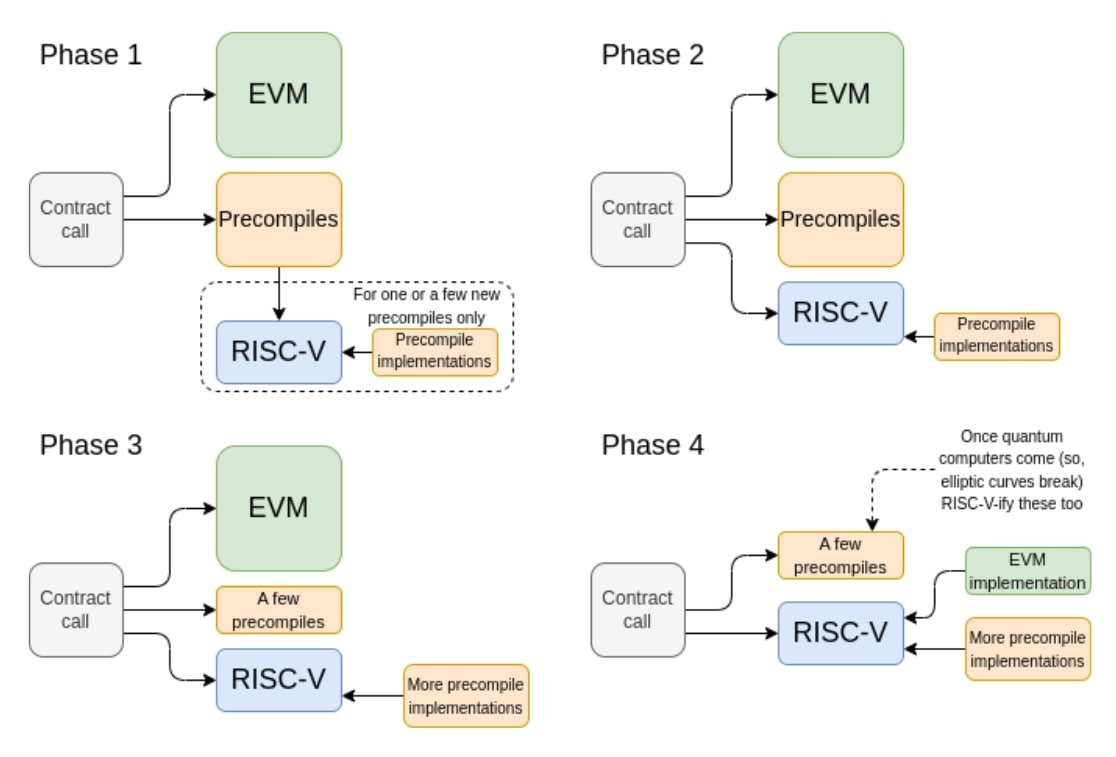Vitalik Buterin Proposes SimpleL1: A New Direction for Ethereum

Key Takeaways:
- SimpleL1 decouples consensus and execution, slimming down Layer 1’s responsibilities.
- Execution logic is offloaded to Rollups, while the base chain handles block proposals and finality.
- A leaner protocol surface reduces attack vectors and eases client verification.
- Modularity enables independent upgrades to consensus, fee markets, and validator economics.
Why Simplification Is Critical
Ethereum’s current monolithic design bundles transaction execution, smart‑contract logic, and consensus into a single Layer 1 stack. Over years of hard forks—Spurious Dragon, Istanbul, Shanghai—the codebase has swelled, making it harder to audit, maintain, and secure. Vitalik Buterin argues that this complexity creates stalls in development, raises node‑running costs, and widens the attack surface. As validator software balloons in size, fewer participants can operate full nodes, undermining Ethereum’s decentralization goals. By rethinking the core protocol as a minimal “root of trust,” the community can ensure robust security while offloading heavy computation to specialized Layer 2 networks.
Introducing the SimpleL1 Architecture
SimpleL1 splits Ethereum into two layers: a lean consensus layer (handling PoS validator management, block proposals, and finality with just a few thousand lines of code) and a minimalist execution layer (processing only Ether transfers and fee payments). All smart contracts and complex state move to Rollups, which submit “state roots” and transaction data via Merkle proofs. By defining a narrow protocol API, the base chain focuses on security and liveness, while Rollups handle application logic—enabling modular upgrades to fees, rewards, or slashing without altering consensus.

Vitalik Buterin Urges Ethereum to Embrace Bitcoin-Style Simplicity
Benefits of a Minimal Layer 1
A streamlined SimpleL1 design yields several practical advantages. First, with a considerably smaller and more stable codebase, auditors can more easily verify correctness, reducing the likelihood of hidden bugs. Second, by trimming off heavy execution tasks, block validation and finalization happen faster, cutting confirmation times and improving user experience. Third, because chains no longer need to store complex smart contract data, the hardware and storage needed for nodes drop dramatically, encouraging more individuals to participate. Finally, separating core consensus rules from application logic allows network upgrades—such as tweaks to penalties or block choice—to be implemented independently, minimizing disruption.
By shifting application workloads to Rollups—whether optimistic, ZK‑based, or hybrid—Ethereum can scale transaction throughput dramatically without compromising the root chain’s security. This “Internet of Rollups” vision promises near‑unbounded capacity, while SimpleL1 remains the unshakeable foundation.
Ecosystem Response: Innovation vs. Fragmentation
The SimpleL1 proposal has catalyzed excitement and experimentation. Major client teams are building prototype nodes that implement the slim consensus API. Layer 2 developers are drafting standard interfaces for state commitment and fraud proofs. However, some community voices worry that multiple competing Rollup standards could splinter liquidity and user experience. To address this, the Ethereum Foundation is sponsoring working groups to define interoperable bridges, unified wallet APIs, and shared tooling. Meanwhile, rival chains tout their own shared‑security models; the SimpleL1 effort repositions Ethereum as the premier “settlement layer,” emphasizing security and decentralization above all.
Compliance Countdown: Metrics That Matter
The community will watch a handful of clear metrics to know if the lean‑chain vision is on track. First, the combined core code should shrink from around 150,000 lines to under 10,000, making it far easier to audit and maintain. Second, there should be at least three fully independent, security‑reviewed implementations of the protocol within two years, ensuring no single client dominates. Third, the share of staked ETH held by individual or small‑team operators needs to climb above 30%, reflecting more people running nodes. Fourth, block confirmations ought to happen in under two minutes on average while the network stays online over 99.9% of the time. Finally, at least 80% of transactions should flow through off‑chain rollups within a year and a half of launch, proving real‑world scaling.
Tracking these metrics will ensure SimpleL1 realizes its promise: a secure, scalable, and future‑proof Ethereum that can sustain global adoption for decades to come.
More News: Ethereum Foundation Forms “Silviculture Society” to Sustain the Core of the Blockchain
The post Vitalik Buterin Proposes SimpleL1: A New Direction for Ethereum appeared first on CryptoNinjas.